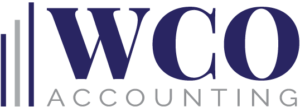We Offer Expert
SaaS Accounting
Have a Question?
Trusted Experts in
Accounting for SaaS Businesses
The monthly accounting cycle for Software as a Service (SaaS) businesses, using integrated applications with accounting software and industry-specific accounting, involves several key steps to manage financial operations and track transactions. Here is a summary of the monthly accounting cycle for SaaS companies:
Revenue Recognition
Determine and recognize revenue from SaaS subscriptions or contracts. Utilize integrated revenue recognition modules or features within the accounting software to comply with accounting standards and accurately record revenue based on the applicable revenue recognition criteria, such as the timing of services delivered or usage-based pricing.
Subscription Management
Track and manage customer subscriptions, including subscription renewals, upgrades, or cancellations. Utilize integrated subscription management modules or add-ons within the accounting software to automate subscription billing, manage customer contracts, and track subscription-related metrics.
Accounts Receivable and Billing
Generate customer invoices based on subscription terms, usage, or other billing arrangements. Utilize accounts receivable modules within the accounting software to track customer invoices, manage payment collections, and monitor outstanding receivables.
Cost Tracking
Track costs associated with delivering the SaaS services, such as hosting expenses, software licenses, customer support, and infrastructure costs. Utilize integrated cost tracking modules or add-ons within the accounting software to accurately allocate costs to the appropriate cost centers or SaaS offerings.
Expense Management
Record and track general operating expenses, including salaries, marketing, office rent, and other administrative costs. Utilize expense management modules within the accounting software to streamline expense recording, manage approvals, and track spending against budgets.
Financial Reporting
Prepare financial statements, including income statements, balance sheets, and cash flow statements. Utilize the financial reporting capabilities within the accounting software or integrate with reporting tools to generate accurate and comprehensive financial statements for the business.
Budgeting and Forecasting
Develop and track budgets for SaaS operations, including revenue projections, expense budgets, and cash flow forecasts. Utilize budgeting and forecasting modules or features within the accounting software to set financial goals, monitor performance, and compare actual results against budgeted amounts.
Integration with Other Systems
Integrate the accounting software with other systems, such as customer relationship management (CRM) software, billing platforms, or subscription management tools, to streamline data exchange and improve efficiency in data entry and reporting.
Compliance and Regulatory Reporting
Ensure compliance with relevant regulatory requirements, such as tax filings, financial disclosures, and industry-specific regulations. Utilize compliance reporting modules or features within the accounting software to streamline the preparation and submission of required reports.
Analysis and Decision-Making
Utilize the reporting and analysis capabilities of the accounting software to gain insights into key performance indicators (KPIs), such as monthly recurring revenue (MRR), customer churn rates, customer acquisition costs, and profitability by customer segment. Use this information to make informed business decisions and identify areas for improvement.
By leveraging integrated applications and industry-specific accounting features within accounting software, SaaS businesses can streamline their accounting processes, accurately track transactions, and generate insightful financial reports. Consulting with accounting professionals experienced in the SaaS industry can provide further guidance in addressing industry-specific challenges and optimizing financial management for your business.

